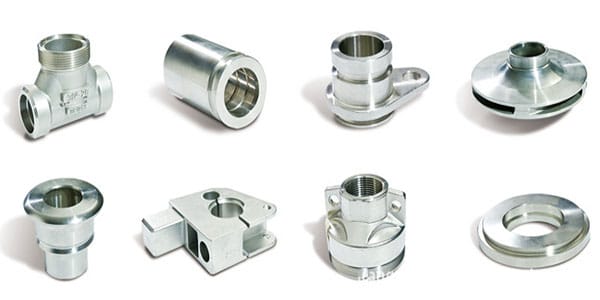Aluminum casting processes vary in different manufacturing methods. For example, Aluminum sand casting, Aluminum die casting, Aluminum pressure die casting, Aluminum continuous casting, Aluminum shell mold casting. Each aluminum casting process has its advantages and disadvantages. According to the casting size, quality request, and complexity, we can choose the most suitable method for our applications or business.
Aluminum is a light metal. The chemical symbol is Al. Among the metal varieties, it is second only to steel. It is the second-largest group of metals. Aluminum is widely used in different cast parts, serving non-industrial and industrial uses. Casting aluminum alloy has some advantages that other castings cannot match. Such as beautiful appearance, lightweight, corrosion resistance. This makes it widely favored by users. About the Aluminum casting processes or how to cast aluminum, the first answer is to know how many methods of aluminum casting? HOW MANY ALUMINUM CASTING PROCESSES? The core quality of casting, the advantages of aluminum casting methods, and their disadvantages of them.
Here we will list 7 top aluminum casting methods and make a comparison of them.
ALUMINUM CASTING PROCESSES
- Aluminum Pressure die casting
- Aluminum sand casting
- Aluminum Investment casting
- Permanent mold aluminum casting
- Shell mold aluminum casting
- Aluminum Centrifugal Casting
- Aluminum Continuous casting
Aluminum sand casting
What is Aluminum sand casting
Sand casting is one of the oldest casting methods that appeared about 2000 years ago. Sand casting has been used to cast aluminum since aluminum metal became popular since the beginning of the 20th century.
Aluminum sand casting Process
In the aluminum sand casting, mold is made of sand, and bonding agents; patterns are placed inside the mold and pressed tightly.
After withdrawing the pattern, it is created a mold cavity that is the replica of the aluminum casting shape.
Through the gating system, molten aluminum is poured into the mold cavity and solidified. As the casting is cooled down, the caster breaks the sand mold, and the casting is collected.
Advantages of aluminum sand casting
Low cost.
Flexibility to fabricate the number of castings, whether small or large order.
Any aluminum alloy can be sand cast, including alloys with hot shortness.
Green sand has low compressive strength, thus minimizing the risk of hot cracking defects.
Flexibility to adjust the pattern design.
Disadvantages of aluminum sand casting
The surface finish is not smooth. It can be treated with sandblasting to enhance the surface quality.
The size of the casting has a higher tolerance than other aluminum casting methods.

